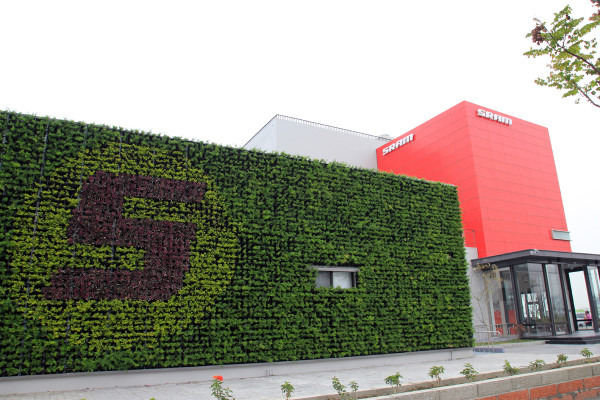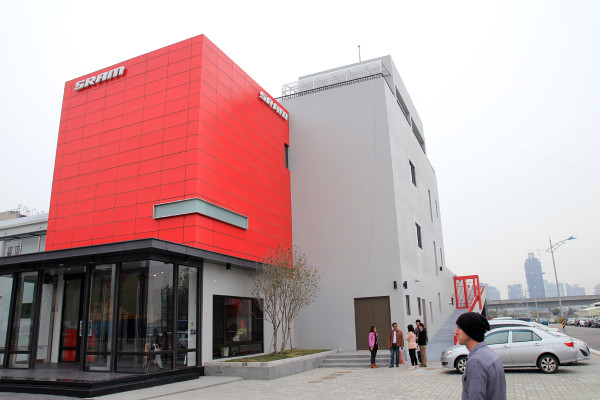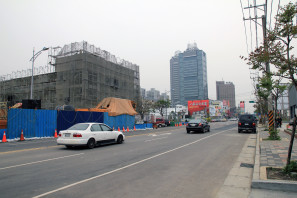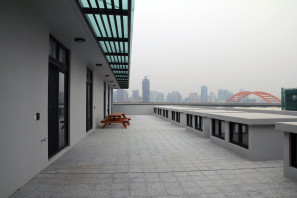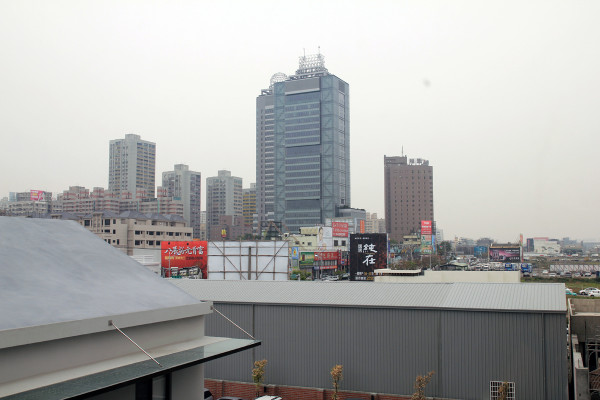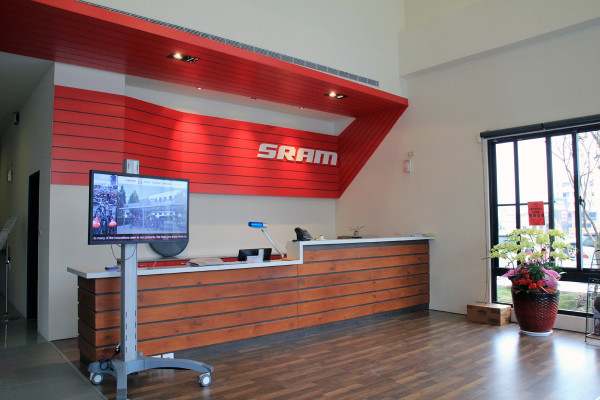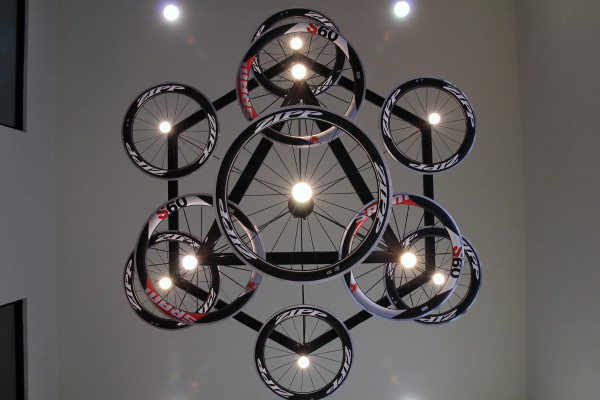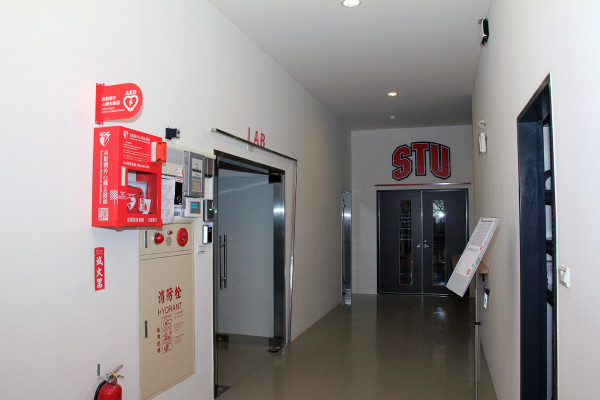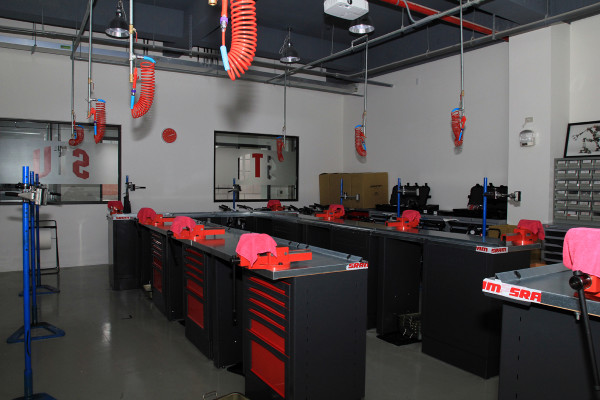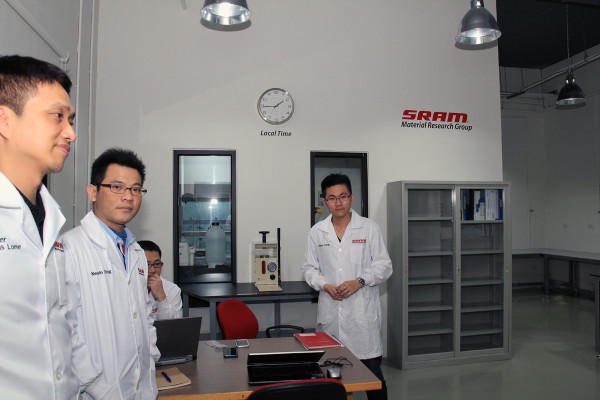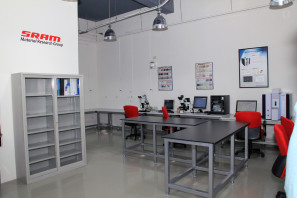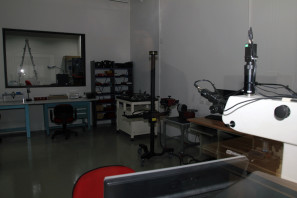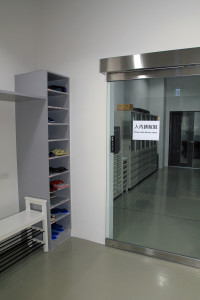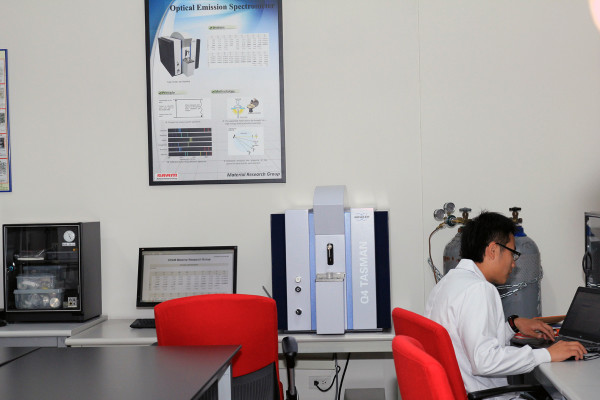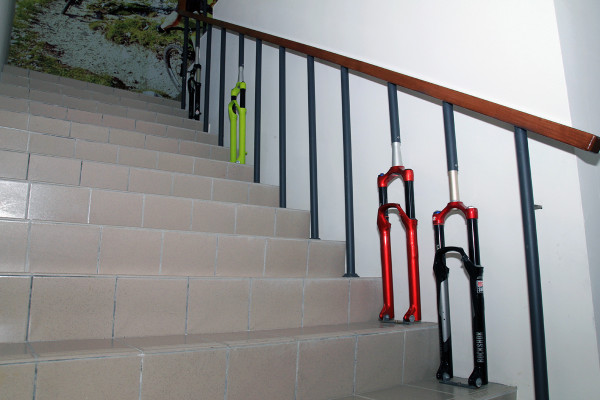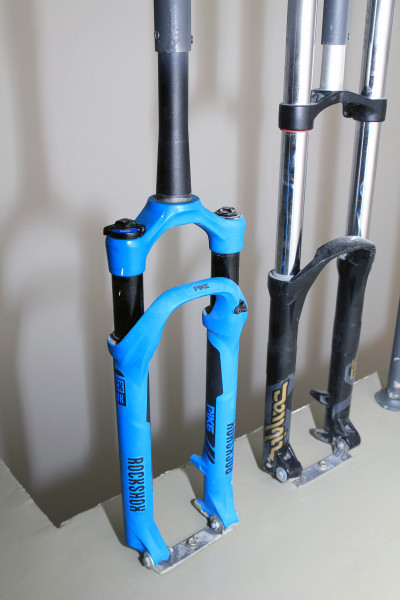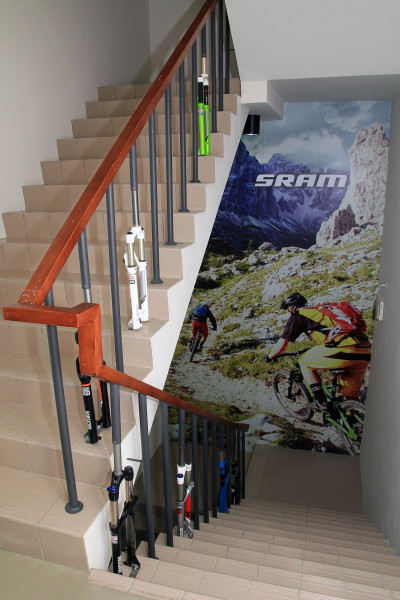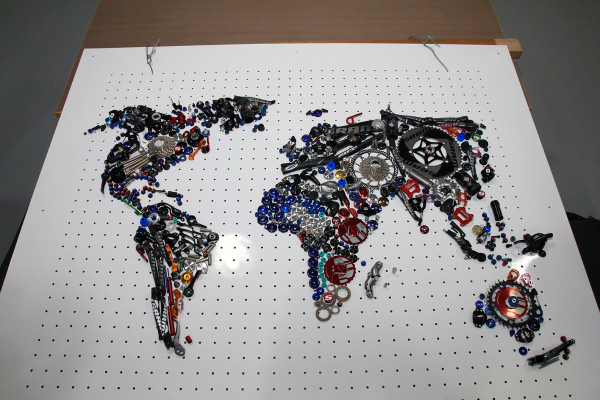If factories are where bicycle components are born, then for SRAM, their Development Centers would be where products are finally conceived. Given SRAM’s global nature, new products could be developed in the U.S., Europe, or Asia, but most of them are now sent from the design centers to the new Asia Development center to undergo final testing and analysis. As it was explained to us, the ADC is specifically there as a bridge from the engineering side of the process to the manufacturing side.
After testing is complete, the products can then be transferred to the factories for full scale production. Having opened just before the Chinese New Year in 2014, the ADC illustrates SRAM’s commitment to Taiwanese manufacturing with a state of the art building that is just as impressive on the inside…
Located on the outskirts of bustling Taichung, the Asia Development center is positioned in an area that seemed more open and spacious than one would expect, which suits its image. This is not some well used manufacturing building, the ADC is as fresh and new as it gets.
Step into the front of the building and you are greeted with an interior worthy of any of SRAM’s locations. If it weren’t for the Mandarin on the walls and bizarre candy in the jars, you’d be hard pressed to say just what country you were in.
In addition to the product development side, this is also the location for SRAM’s Taiwanese STU or SRAM Technical University. Anyone in Taiwan is now able to get the same level of training that we would see from SRAM’s STU in Colorado Springs.
Employing more than 164 individuals, one of the most important parts of the building is the Materials Research Group or MRG. SRAM’s engineers and materials scientists have access to high tech equipment like an Optical Emission Spectrometer to measure the exact make up of materials by zapping it with heat or an arc and measuring the light waves that are produced. This is especially useful when introducing new materials and new manufacturing process and enables engineers to have a better understanding of the final product.
Next door to the MRG is a Precision Measurement Lab, which is exactly like it sounds. After removing your footwear, you can enter the climate controlled room that is filled with measuring instruments like a CMM, and 3D scanner that is used to replicate physical parts in CAD. Another door down but not pictured is the Test Lab. In 2011, SRAM integrated their separate labs into a single group called Global testing to make it easier for the different locations to be on the same page. We weren’t allowed to take any photos since there were some, uh, prototypes hiding in plain sight, but many of the same test rigs we saw in Colorado Springs were here as well.
It wouldn’t be a SRAM Development Center without some clever architecture. Suspension forks fill in as stair railings. Also, a blue pike?
Each new building continues to add to SRAM’s global presence – what better way to represent that than a world made of SRAM parts? SRAM’s carbon production facility is up next. Make sure to check out part 1 below, if you haven’t already.
Factory Tour: SRAM’s Taiwanese Manufacturing Part 1 – RockShox Suspension, SRAM Drive Train, More
